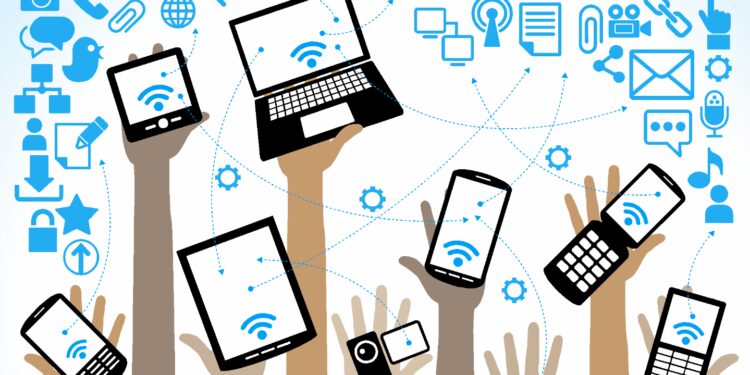The Digital Daze: SAU Reacts to Excessive Screen Time

(Photo courtesy of HiClipart)
According to VisonDirect.co.uk, you could spend 44 years of your life looking at a screen.
In classrooms nationwide, high school students frequently use electronic devices like laptops and iPads to enhance learning. Meanwhile, their phones, buzzing with notifications sit nearby.
“I look up when I’m teaching and see people just using their phones and it pisses me off. They aren’t paying attention and it’s a hassle,” says Jim Baumann, a communications professor at St. Ambrose University.
Yet, Professor Baumann acknowledges that his students are adults and can look after themselves.
“It’s really up to the students to pay attention or not. It’s not my problem and I get paid the same no matter what,” he explained.
According to Rebecca Moody, head of Data Research at Comparitech, the average American adult in 2023 spent an estimated 7 hours and 4 minutes daily looking at a screen.
In 2022, a VisonDirect poll of 2000 U.S. adults with an average lifetime of 60.7 years, showed the average adult spent 6,259 hours and 48 minutes a year on electronics, which includes phones, iPads, computers, and televisions.
The American Academy of Child and Adolescent Psychiatry (AACAP) states, “On average, children ages 8-12 in the United States spend 4-6 hours a day watching or using screens, and teens spend up to 9 hours.”
Many researchers believe that excessive screen time has not been extensively and closely studied on adults, Time.com highlights. However, students and professors at St. Ambrose University were asked if excessive screen time from smartphones plays a role in enriching everyday learning.
Greg Armstrong is a digital media production professor at St. Ambrose University. His daily lessons involve hands-on learning, including a weekly newscast show requiring cameras and operating equipment.
His views are relative to Professor Baumann’s experiences, “I occasionally notice students with their phones out during our broadcast. This can be difficult because I could reprimand them, but ultimately it is their broadcast.”
Professor Armstrong began his teaching career at SAU in the Fall of 2022, “As a newer instructor, it really makes me question my lesson plan and if I am effectively communicating with my students.”
According to Addiction Center, there are 3.8 billion smartphone users worldwide. The Addiction Center provides instant access to guides and professionals for substance abuse, mental health, and other addictive issues. They claim on their website, “Research published by Virgin Mobile discovered that those billions of smartphone users receive 427% more messages and notifications than they did a decade ago. They also send 278% more texts.”
The “pattern of abuse” stated by Addiction Center is “greatest among those under 30, with an average of 16% of adolescents addicted [to their phones].”
Do St. Ambrose Students believe they are addicted to their smartphones?
“I don’t find my phone as a whole distracting, only certain apps and notifications like Snapchat. I wouldn’t say I am addicted to my phone, but I definitely have an attachment to it,” says Kaylee Driscoll, a sophomore at SAU.
Slade Dias is the student body president and a member of the Student Government Association (SGA) on campus. With zero hesitation, he states, “I am personally not addicted to my phone. Anyone that is addicted to their phone is either looking for something they can’t find in themselves or can’t stand being by themselves.”
“As a freshman and sophomore, I was on my phone a lot in class. But as I’ve gotten older I realize how much of a problem it can be so I stopped checking my notifications and put my education first,” explains Eliza Dzurisin, a senior.
Professor Armstrong finds smartphone distractions in his classroom vary from person to person. “Usually, it’s not the same student staring at the screen for prolonged periods, but several who are occasionally scrolling or looking down for minutes at a time.”
Excessive screen time inside and outside of the classroom can lead to increased anxiety, depression, and other psychological disorders. Students may develop obesity due to insufficient exercise, experience poor sleep from late-night phone use, and exposure to online harassment and cyberbullying.
Although not every smartphone user experiences the negative effects of excessive screen time, it is important to be aware of how much time you spend online.


